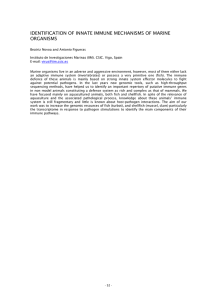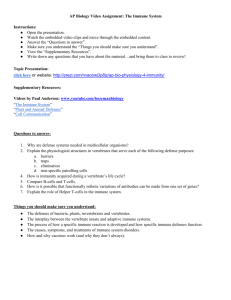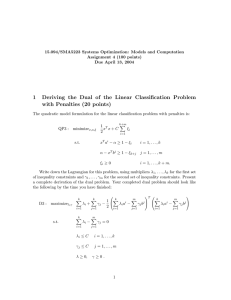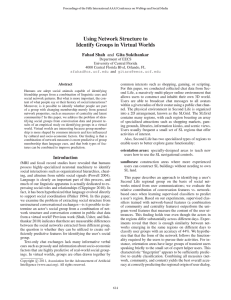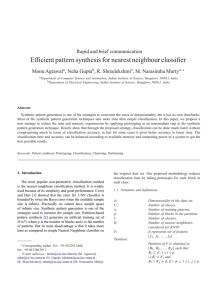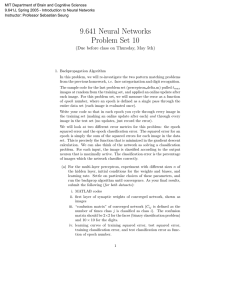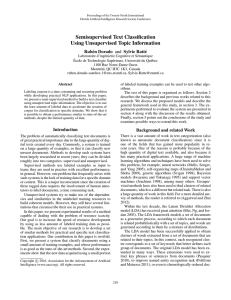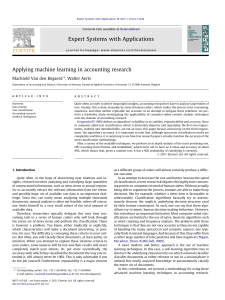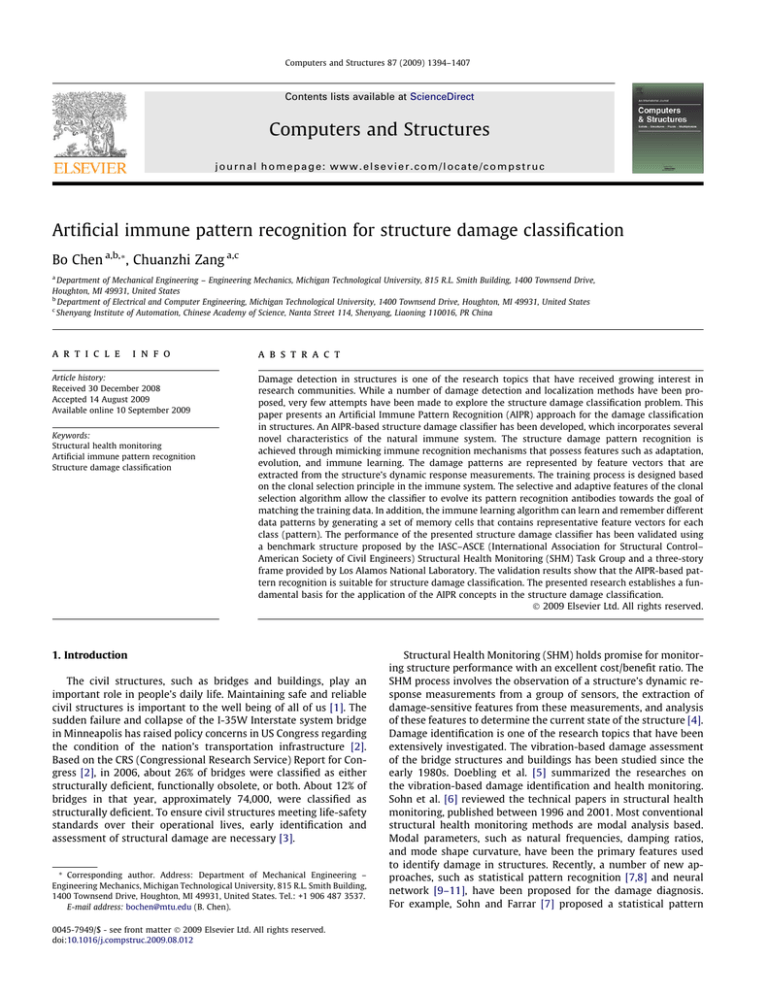
Computers and Structures 87 (2009) 1394–1407
Contents lists available at ScienceDirect
Computers and Structures
journal homepage: www.elsevier.com/locate/compstruc
Artificial immune pattern recognition for structure damage classification
Bo Chen a,b,*, Chuanzhi Zang a,c
a
Department of Mechanical Engineering – Engineering Mechanics, Michigan Technological University, 815 R.L. Smith Building, 1400 Townsend Drive,
Houghton, MI 49931, United States
b
Department of Electrical and Computer Engineering, Michigan Technological University, 1400 Townsend Drive, Houghton, MI 49931, United States
c
Shenyang Institute of Automation, Chinese Academy of Science, Nanta Street 114, Shenyang, Liaoning 110016, PR China
a r t i c l e
i n f o
Article history:
Received 30 December 2008
Accepted 14 August 2009
Available online 10 September 2009
Keywords:
Structural health monitoring
Artificial immune pattern recognition
Structure damage classification
a b s t r a c t
Damage detection in structures is one of the research topics that have received growing interest in
research communities. While a number of damage detection and localization methods have been proposed, very few attempts have been made to explore the structure damage classification problem. This
paper presents an Artificial Immune Pattern Recognition (AIPR) approach for the damage classification
in structures. An AIPR-based structure damage classifier has been developed, which incorporates several
novel characteristics of the natural immune system. The structure damage pattern recognition is
achieved through mimicking immune recognition mechanisms that possess features such as adaptation,
evolution, and immune learning. The damage patterns are represented by feature vectors that are
extracted from the structure’s dynamic response measurements. The training process is designed based
on the clonal selection principle in the immune system. The selective and adaptive features of the clonal
selection algorithm allow the classifier to evolve its pattern recognition antibodies towards the goal of
matching the training data. In addition, the immune learning algorithm can learn and remember different
data patterns by generating a set of memory cells that contains representative feature vectors for each
class (pattern). The performance of the presented structure damage classifier has been validated using
a benchmark structure proposed by the IASC–ASCE (International Association for Structural Control–
American Society of Civil Engineers) Structural Health Monitoring (SHM) Task Group and a three-story
frame provided by Los Alamos National Laboratory. The validation results show that the AIPR-based pattern recognition is suitable for structure damage classification. The presented research establishes a fundamental basis for the application of the AIPR concepts in the structure damage classification.
Ó 2009 Elsevier Ltd. All rights reserved.
1. Introduction
The civil structures, such as bridges and buildings, play an
important role in people’s daily life. Maintaining safe and reliable
civil structures is important to the well being of all of us [1]. The
sudden failure and collapse of the I-35W Interstate system bridge
in Minneapolis has raised policy concerns in US Congress regarding
the condition of the nation’s transportation infrastructure [2].
Based on the CRS (Congressional Research Service) Report for Congress [2], in 2006, about 26% of bridges were classified as either
structurally deficient, functionally obsolete, or both. About 12% of
bridges in that year, approximately 74,000, were classified as
structurally deficient. To ensure civil structures meeting life-safety
standards over their operational lives, early identification and
assessment of structural damage are necessary [3].
* Corresponding author. Address: Department of Mechanical Engineering –
Engineering Mechanics, Michigan Technological University, 815 R.L. Smith Building,
1400 Townsend Drive, Houghton, MI 49931, United States. Tel.: +1 906 487 3537.
E-mail address: bochen@mtu.edu (B. Chen).
0045-7949/$ - see front matter Ó 2009 Elsevier Ltd. All rights reserved.
doi:10.1016/j.compstruc.2009.08.012
Structural Health Monitoring (SHM) holds promise for monitoring structure performance with an excellent cost/benefit ratio. The
SHM process involves the observation of a structure’s dynamic response measurements from a group of sensors, the extraction of
damage-sensitive features from these measurements, and analysis
of these features to determine the current state of the structure [4].
Damage identification is one of the research topics that have been
extensively investigated. The vibration-based damage assessment
of the bridge structures and buildings has been studied since the
early 1980s. Doebling et al. [5] summarized the researches on
the vibration-based damage identification and health monitoring.
Sohn et al. [6] reviewed the technical papers in structural health
monitoring, published between 1996 and 2001. Most conventional
structural health monitoring methods are modal analysis based.
Modal parameters, such as natural frequencies, damping ratios,
and mode shape curvature, have been the primary features used
to identify damage in structures. Recently, a number of new approaches, such as statistical pattern recognition [7,8] and neural
network [9–11], have been proposed for the damage diagnosis.
For example, Sohn and Farrar [7] proposed a statistical pattern




